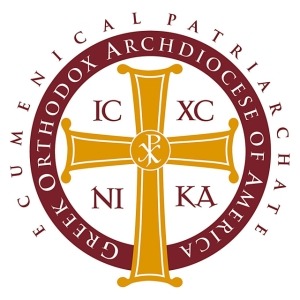the history of
St. Photios National Shrine
The Saint Photios Greek Orthodox National Shrine, the first national shrine of the Greek Orthodox Archdiocese in America, is located in the Avero House, on St. George Street in St. Augustine, Florida, the oldest continuously occupied city in the United States of America. It was here, in the Avero House, that the survivors of the New Smyrna Colony found refuge following a decade of tragedy.

This National Shrine is dedicated not only to the memory of the first Greek Orthodox pioneers who arrived in the New World on June 26, 1768, but to all the following generations of immigrants who came to this New World seeking freedom, justice, and a better life for themselves and their children.
Today, the Saint Photios Shrine is a sacred, educational center where Americans of Greek ancestry may come to be refreshed in the wisdom and warmth of their cultural heritage. The Shrine is also a public place where all may come to honor and remember their own immigrant ancestors.
The passageway through the several rooms of the Shrine reveals exhibits and galleries. At the end of the passageway is the Shrine’s glorious jewel: the serenely beautiful Saint Photios Chapel. Here, the visitor is surrounded by magnificent Byzantine sacred icons on its walls and above in five domes. One may wish to light a candle and spend a few quiet moments of peaceful reflection. Iconographer George Filippakis, assisted by his father Constantine and his brother John, painted the frescoes.
The reconstruction of the Avero House, originally built after a siege by the English in 1702, was not approached hastily. Such an opportunity is rare, and the responsibility a heavy burden. In 1965, the Greek Orthodox Archdiocese of North and South America purchased the Avero House at the urging of several faithful living in St. Augustine. Five couples: George and Olga Fotiou, James and Stella Kalivas, Steve and Geraldine Sarris, Athanasios and Despina Xynidis, and Martha and Spero Zepatos are remembered in perpetuity as the Shrine Founders with the last four couples signing the binder and loan for the Avero House, carrying the mortgage until funding could be secured by the Archdiocese.
Much of the history of the house was known through the research of Dr. Epaminondas Panagopoulos, whose doctoral dissertation, The New Smyrna Colony, An 18th Century Odyssey, was printed by the University of Florida at Gainesville, Florida, and then by Holy Cross Press in Brookline, Massachusetts. His research affirmed that this humble home had been the refuge and then subsequent house of worship for the survivors of the New Smyrna Colony that were received as refugees into the City of St. Augustine by Governor Patrick Tonyn in 1777. This tragic story of nearly 500 Greeks and their agony in the New World, their eventual escape to St. Augustine, and their hard-won success in later years is preserved for future generations.
In 1971, Archbishop Iakovos, spiritual leader of the Greek Orthodox Archdiocese of North and South America, bestowed the name of Saint Photios upon the chapel in our National Shrine, thus honoring Photios the Great, who served as Ecumenical Patriarch of Constantinople in the ninth century. For seventeen years, the Shrine National Committee, overseen by Archdiocesan Coordinator Ernest Villas with Shrine President, Bishop John of Amorion, worked toward opening the Shrine. Committee member Ted Pappas of Jacksonville, Florida, was hired as the Shrine architect. Mr. Pappas applied for and received designation of the Avero House on the U.S. National Register of Historic Places on June 13, 1972.
The building was then razed and a team of archaeologists, led by University of Florida Associate Professor Kathleen Deagan, unearthed over 32,000 artifacts during the site project. Following the 1974 excavations, the house was again reconstructed as the present day “Greek Orthodox Shrine”.
In May, 1981, Archbishop Iakovos commissioned Executive Director James G. Couchell, later ordained a bishop of the Church, to open the Shrine. Within nine months, the dedication and opening ceremonies and festivities took place on February 27, 1982.
To commemorate the day, Archbishop Iakovos gifted a special gold reliquary holding bone fragments from 18 saints of the ancient Christian Church obtained from the Very Reverend Archimandrite Eugene Pappas of the Three Hierarchs Church in Brooklyn, NY.
The Chapel of Saint Photios was consecrated February 22, 1985.
Our current Executive Director, Mrs. Polexeni Maouris Hillier, has served the National Shrine since June 6, 2005.
On June 26, 2018, the Saint Photios Foundation culminated a yearlong celebration honoring the 250th anniversary of Greeks arriving in America to colonize the Turnbull entrepreneurial venture under the British Indentured Servitude Act, a colony known as New Smyrna.

